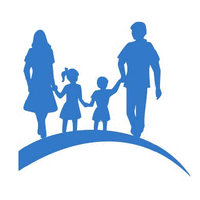Continuity of Care for Individuals Receiving Mat Treatment is Not Fluid
Medication-Assisted Treatment (MAT): Debunking the Myths and Misconceptions


The Substance Abuse and Mental Health Services Administration (SAMHSA) defines MAT as "the use of medications, in combination with counseling and behavioral therapies, to provide a whole-patient approach to the treatment of substance use disorders (SUDs)."[1] MAT for opioid use disorder is sometimes referred to as MOUD (medication for opioid use disorder).
Decades of research show that MAT is more effective than SUD treatment (without medication) for opioid use disorder. MAT improves patient survival, increases treatment retention, and improves birth outcomes for pregnant women.[2] Another study found that after a year of receiving MAT, parents had a 120% higher chance of retaining custody of their children, compared to parents who did not receive MAT.[3] Still, despite the extensive evidence base, engagement and retention in MAT remain persistently low.[4]
There are many harmful myths and misconceptions about the use of MAT. Many may believe MAT is simply replacing one addiction for another, not suitable for long-term treatment, and inappropriate for pregnant and parenting women. These fallacies can limit parents' recovery options and lower family reunification rates.[5]
Available Resources
Medication-Assisted Treatment and Common Misconceptions: This video offers an in-depth look at MAT while addressing common misconceptions about treatment. It also highlights strategies that inform effective child welfare and court practices. It is part of the Opioid Use Disorder and Civil Rights Video and Webinar Series designed to assist child welfare and court professionals with federal disability rights protections that apply to some parents with an OUD (or SUD) and involved with child welfare.
Resources to Support Families in Child Welfare Affected by Opioid and Other Substance Use Disorders: This webinar features technical assistance resources, including publications and tools communities can use to better serve families in child welfare and affected by OUDs or SUDs. The intended audience includes policymakers, community service providers, public health professionals, healthcare providers, child welfare professionals, and SUD treatment providers.
A Collaborative Approach to the Treatment of Pregnant Women with Opioid Use Disorders: Practice and Policy Considerations for Child Welfare, Collaborating Medical, and Service Providers: This manual specifies best practices for states, tribes, and local communities on collaborative treatment approaches for pregnant women living with OUDs, and the risks and benefits associated with MAT.
Guidance from the American Academy of Pediatrics on Neonatal Opioid Withdrawal Syndrome: Dr. Stephen Patrick, a national leader on the implications of maternal opioid use on infants, provides this timely webinar covering the opioid crisis; implications for the mother/infant dyad; and an overview of the American Academy of Pediatrics' revised guidance on Neonatal Opioid Withdrawal Syndrome (NOWS), which offers recommendations for management of infants with opioid exposure.
The Management of Care for Pregnant Women with Opioid and Other Substance Use Disorders: Dr. Mishka Terplan offers concrete strategies for working with addiction medicine physicians in this webinar, while discussing the role obstetricians can play alongside child welfare agencies to develop Plans of Safe Care (POSC) in the prenatal period.
A Mother-Centered Approach to Treat Neonatal Abstinence Syndrome Dr. Matthew Grossman worked with colleagues at Yale to pioneer several changes in the care of infants with neonatal abstinence syndrome (NAS) to reduce time spent in the hospital. This webinar offers a look at how Dr. Grossman's team transitioned from their usual practice to a focus on managing "eating, sleeping, and consoling" tasks for infants.
SAMHSA also just released an updated version of Treatment Improvement Protocol (TIP) 63: Medications for Opioid Use Disorder. This publication reviews the three FDA-approved medications used to treat opioid use disorder—methadone, naltrexone, and buprenorphine—as well as other strategies and services needed to support recovery.
To learn more about programs, strategies, and interventions that improve outcomes for families, visit Children and Family Futures at cffutures.org.
[1] Substance Abuse and Mental Health Services Administration. (2021, January 4). Medication-Assisted Treatment (MAT). https://www.samhsa.gov/medication-assisted-treatment
[2] Substance Abuse and Mental Health Services Administration. (2021, January 4). Medication-Assisted Treatment (MAT). https://www.samhsa.gov/medication-assisted-treatment
[3] Hall, M.T., Wilfong, J., Huebner, R.A., Posze, L., and Willauer, T. (2016). Medication-assisted treatment
improves child permanency outcomes for opioid using families in the child welfare system. Journal of Substance Abuse Treatment 71, 63-67.
[4] O'Brien, P., Schrader, K., Waddell, A., and Mulvaney-Day, N. (2020). Models for Medication-Assisted Treatment for Opioid Use Disorder, Retention, and Continuity of Care. Office of the Assistant Secretary for Planning and Evaluation. U.S. Department of Health and Human Services. https://aspe.hhs.gov/reports/models-medication-assisted-treatment-opioid-use-disorder-retention-continuity-care
[5] Radel, L., Baldwin, M., Crouse, G., Ghertner, R., and Waters, A. (2018). Medication-Assisted Treatment for Opioid Use Disorder in the Child Welfare Context: Challenges and Opportunities. Office of the Assistant Secretary for Planning and Evaluation. U.S. Department of Health and Human Services. https://aspe.hhs.gov/sites/default/files/migrated_legacy_files//185086/MATChildWelfare.pdf
madirazzaereun1996.blogspot.com
Source: https://clarola.org/medication-assisted-treatment-mat-debunking-the-myths-and-misconceptions/
Comments are closed.